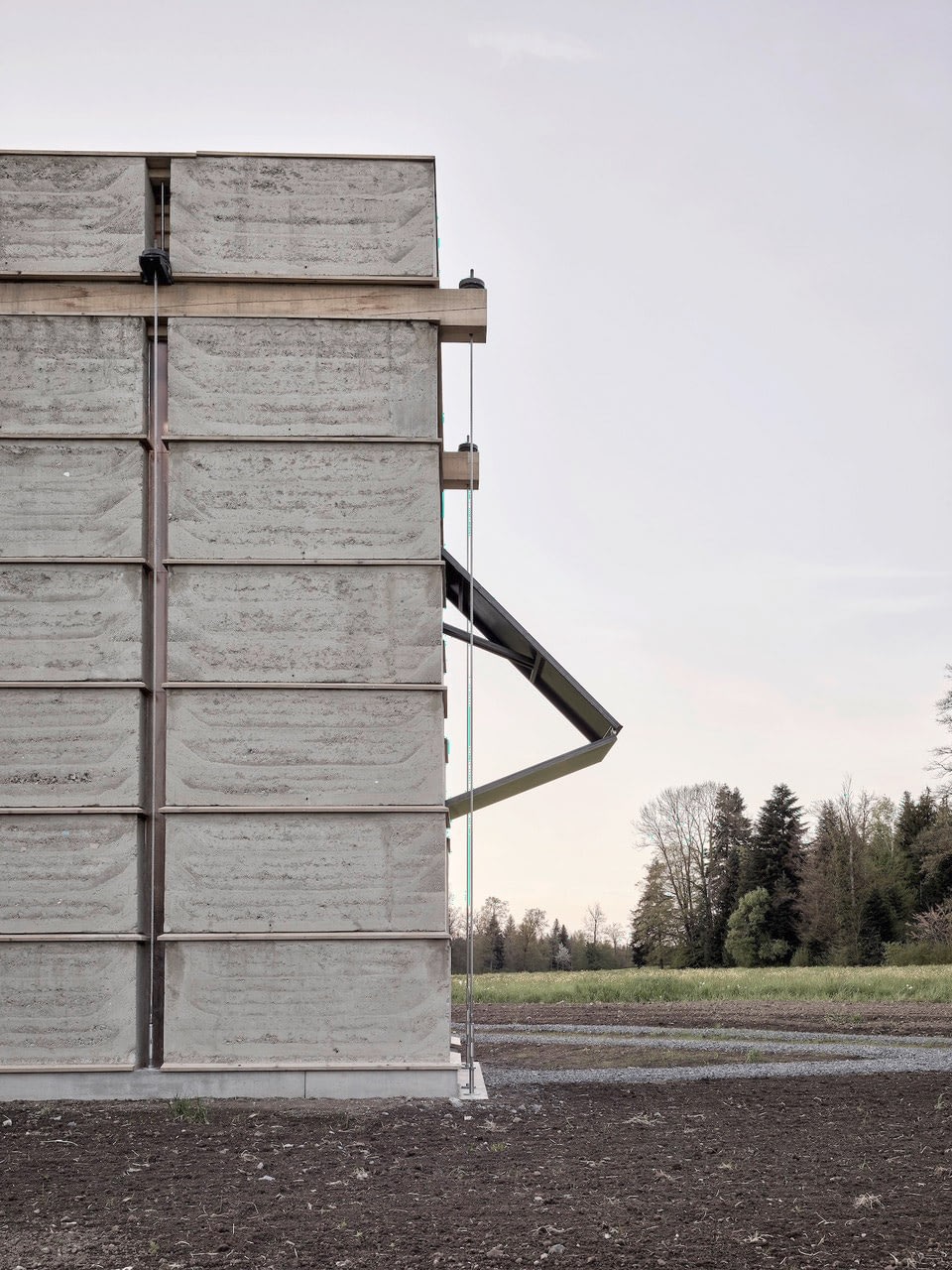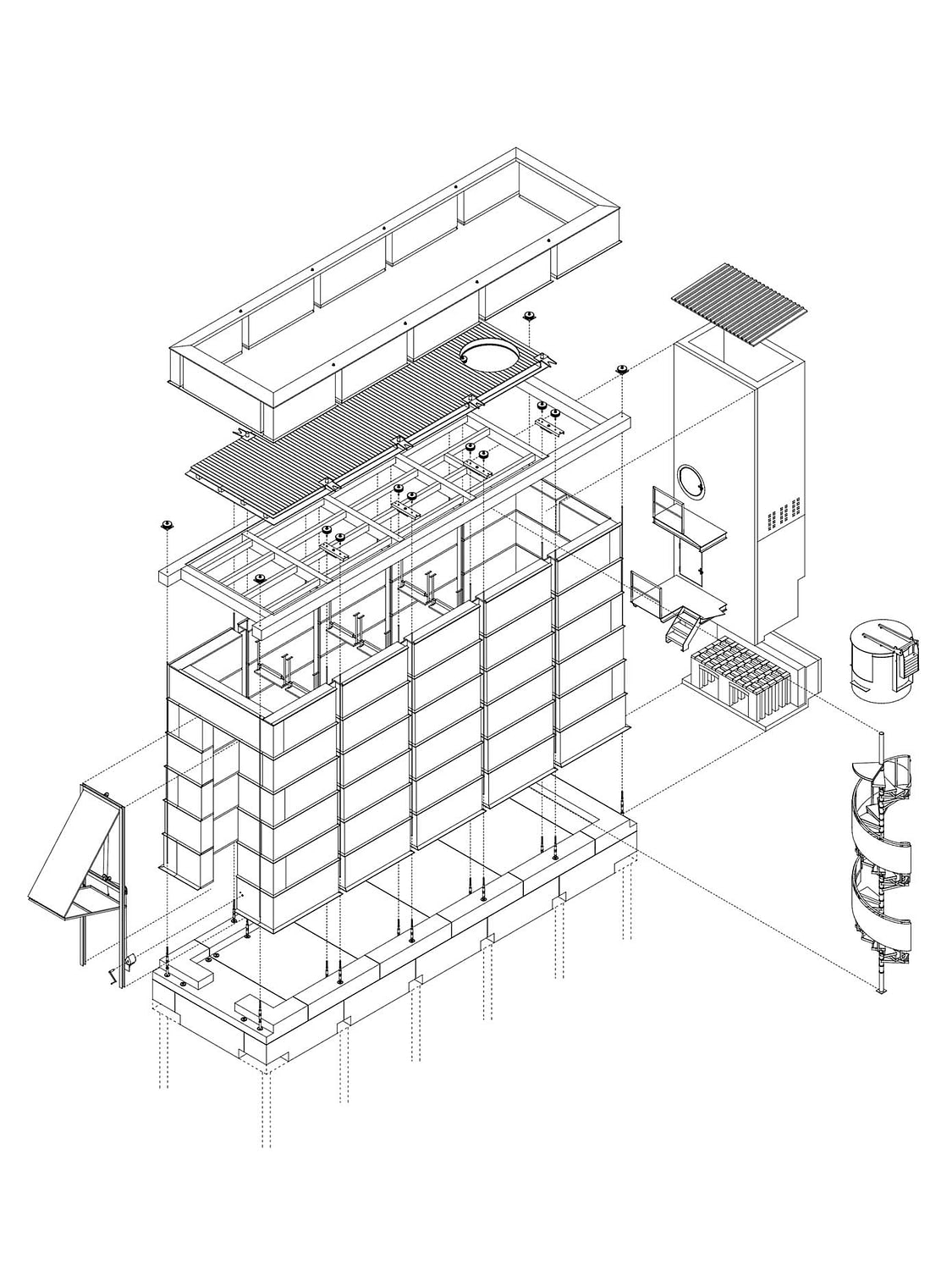Thu 15 Sep
11:10
Boltshauser Architekten, Zurich
Prestressed Earth Furnace Tower, Ziegelei-Museum Cham
The furnace tower is the first prestressed earthen building in the world – a built experiment, and thereby sustainable, constructional disobedience.
Disobedient Earthen Architecture
Its building material, rammed earth, has a long architectural tradition – in Switzerland too – that became almost entirely forgotten in Central Europe. Because earth is often locally available as a resource in the form of spoil, and because in this type of processing it is not fired, it has numerous sustainable properties. Moreover, due to the lack of development during the last century it contains an untapped architectural potential. Bringing contemporary architecture to embrace the versatile capabilities of this unused resource requires unconventional approaches. Boltshauser Architekten recognised the embodied additional value early on. Over the last 20 years, various clay buildings have emerged, for example the Rauch House in Schlins, the Sihlhölzli Sports Equipment Sheds or the Allenmoos School Pavilion in Zurich.
Disobedient Teaching
Convinced by the conclusive work of the Boltshauser architectural office, Roger Boltshauser has made the building material a recurrent teaching element at EPFL Lausanne, the TU Munich und ETH Zurich. Together with the students, the focus has included how earth can be rapidly and directly integrated into today’s building industry and how the current limitations of the material can be newly explored. Driven by constructional innovations, these endeavours have been flanked by the evolution of a specific architectural form of expression.
Disobedient Construction
One design at EPFL Lausanne resulted in an unusual idea, namely to pre-stress comparatively soft rammed earth in a manner similar to concrete. The mock-up of the design project for a storage and exhibition building for the Sitterwerk St. Gallen lead to an initial field trial. The freestanding rammed-earth wall was connected to a foundation via tightened threaded bars (prestressing), thus securing it against horizontal, respectively ground-level forces. The know-how, documentation and scientific supervision from this field trial was co-transported by Studio Boltshauser into the design-task course at the TU Munich, where the double-storey museum expansion – the furnace tower for the Ziegelei-Museum Cham – was designed by the students Regina Pötzinger and Robert Gentner.
Disobedient Project Organisation
Following the construction of the mock-up in St. Gallen, the goal was to integrate the insights into the construction of a building. To achieve this, the prestressing technique was refined and doubled to a height of approximately 8 metres. The prestressing system consists of steel cables and disk springs in order to better absorb any eventual settling in the material without having to re-stress. Materialising the construction method as a built architecture requires considerable powers of motivation and persuasion, not only vis-à-vis the local authorities but also with sponsors and the supporting firms. Critics have to be convinced, building laws obediently followed, and the project has to be given a disobedient start. In this case this happened with the founding of a non-profit association, who secured the financing, as well as with the help of students from different universities, who rammed the earthen elements as part of a workshop. Furthermore, LEHMAG AG founded a firm focused on using the furnace tower as the starting point for greater sustainability in building using spoil.
Numerous other developments in planning and realisation, as well as a the targeted integration of the contractors, resulted in the furnace tower as it now stands, composed of rammed earth, adobe (terrabloc), concrete, steel, wood and Murano glass. Due to the cooperation, the furnace tower represents an attempt to critically query the building industry and architecture – a very direct building that visually embodies disobedience in its long process.

front, © Kuster Frey

Exploded-view drawing,
© Boltshauser Architekten AG
Felix Hilgert
studied civil engineering sciences at ETH Zurich, writing his MA dissertation on ‘Excavation Material as the New Building Resource for Zurich’. Hilgert has worked for Boltshauser Architekten AG, Zurich, since 2017, and since 2018 has acted as an academic assistant for Roger Boltshauser’s visiting lectureship at ETH Zurich. In 2019 Felix Hilgert founded LEHMAG AG, together with Lukas Baumann – a building firm focused on sustainable building using the spoil material earth.
He represents Roger Boltshauser
who founded Boltshauser Architekten AG in 1996, and following numerous teaching posts in Switzerland and Germany has been a visiting lecturer at ETH Zürich since September 2018.